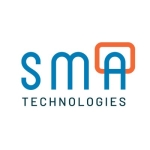What is our primary use case?
We use Studio, Orchestrator, attended and unattended robots.
We use this solution to solve the things that people don't want to do. They spend a lot of time and there is a high potential to make manual errors. Quality suffers because it takes too long and users can get fatigued. There are the things that we are targeting and we have already seen some of the benefits.
We do not run our automations in a virtual environment.
With respect to how easy it is to automate our company's processes, on a scale of one to five, I would rate this solution a four. It is easy, but there are some improvements that can be made.
On a scale of one to five, judging how beneficial it is, I would rate the training a five. It is my lifeline.
From the point that we purchased our UiPath license until we had our first robot was approximately six to eight months. I felt that the process was complicated, in part because of UiPath but also partly because of internal things.
Internally, in order to get set up, the entire infrastructure needs to be in place. All of the servers have to be set up and you need the right permissions because the bots need their own security. You have to explain to people that this is going to be a service account, and you have to explain the need for it. These are all internal, but necessary issues.
How has it helped my organization?
This solution has saved our organization time. I would estimate that the bots save us four weeks every month.
In terms of eliminating human errors, this solution absolutely helps in that regard. The bots don't make any mistakes. Rather, they point out the mistakes that have been made by humans so far.
What is most valuable?
The ability that this solution has to work with Excel is really good.
The SAP feature looks helpful and we are going to explore that functionality in our next project.
What needs improvement?
We don't like the attended bot experience, where it requires the user to be hands-off. We installed it on the user's machine, and the user should not touch the mouse or keyboard because the moment they do, it crashes. It takes over the machine and cannot work in the background. For this reason, it is difficult to work out scenarios that are purely attended.
For example, we have a process that downloads two files and then does some massaging of the data. Now, the data needs to be looked at by the user. An email is sent and the files are deposited into a common folder, and the user will address the task when they have time. After the user manipulates some of the data or makes decisions, it can proceed to the next step.
They drop the modified files into the common folder, but the bot doesn't react because there is no feature in Orchestrator to trigger based on the arrival of a new file. Instead, we have to put in a call to check periodically, whether it be five minutes, fifteen minutes or some other interval. This is something that we don't find desirable.
Creating a trigger that is based on either the arrival of a file or the arrival of an email is a common scenario and it should be built into the platform so that I don't have to code for it every time. As it is now, there are only two ways to trigger a bot.
Orchestrator does not have a good filtering mechanism to look for jobs, and the table view needs to be improved.
From the UiPath side, one thing that irritates me is that you cannot find the downloads to upgrade to the new version. I'm a paid customer and I log in with my credentials, but I cannot download it. I need to create a ticket, tell them who I am, and I have to give them a long list of things that I don't remember. They will address the ticket maybe today or tomorrow, and then finally I get a response. When I use other tools like Microsoft and SAP, as a customer or subscriber of the tool, I just download the latest versions and install them on my servers. When I have a mandate to do work, I want to be able to do it. However, when I can't download the file and have to wait for a ticket to be answered, this wastes my time.
The integration with Elasticsearch and Kibana is a struggle. They are not UiPath products, but they are recommended by UiPath. Some documentation is provided, but it is an Orchestrator installer package the just installs itself. I had to do a lot of experimentation on Windows machines because the configuration is different for Linux machines, and this gave me some trouble. There is a lot of information about this in the UiPath forums and I spent a lot of time on it.
Right now, I have a set of configuration data that I put into an Excel file. The users can change the file and my app will run using the configuration variables. A problem occurs if the Excel file is not closed properly because there are locking issues. This is a pain because the bot crashes when opening a locked file. There is something in Orchestrator called Assets, but it is kind of limited. It only accepts text and a credential. It would be nice if it had a simple database table, say to be able to create a couple of columns that I want to set up for a bot-related task. Rather than a single piece of text, there is a whole table of information. My users will be able to edit it, based on the permission that I assign. Then the bot will look at it and work according to what is specified. This would be a great feature to have.
I would like to see the Studio web-based so that we don't have to install it on everybody's desktop.
Buyer's Guide
UiPath Platform
September 2025
Learn what your peers think about UiPath Platform. Get advice and tips from experienced pros sharing their opinions. Updated: September 2025.
869,095 professionals have used our research since 2012.
What do I think about the stability of the solution?
With respect to the stability, on a scale from one to five, I would rate this solution a five. I have never had any problems with the platform itself. I haven't had to restart the servers or anything like that.
What do I think about the scalability of the solution?
We have three people in the organization who work with the bots.
Which solution did I use previously and why did I switch?
We did not use another RPA solution prior to this one.
In deciding whether and RPA would benefit us, we followed the guidelines that UiPath provided, which is a twelve-step validation process. If processes are unchanging, there is a lot of manual work, there is the potential for errors, and it's simple to automate, etc, then RPA may be suitable. Based on this assessment, we made the investment in RPA.
What about the implementation team?
Our own team was responsible for the implementation.
What was our ROI?
We have recognized ROI through savings in employee hours. For our PoC, with two projects, we saved one full-time employee.
It took us one year to see ROI, although I don't think that we have saved any money yet because of the development time. If we negate the development cost then it might be $60,000 USD, as a developer's salary, but we're not there yet. One of the things that I am trying to do is motivate people to look at more processes that we can automate because right now, my bots are sleeping and I want to put them to work.
What's my experience with pricing, setup cost, and licensing?
Our licensing fees are approximately $140,000 USD annually, which includes all of the bots, Orchestrator, and the Studio.
Which other solutions did I evaluate?
In our company, there is another group that had already implemented UiPath, and they have had good success. We followed their lead, but in addition, we reviewed other sources such as the Gartner ranking. The features set was also considered during the evaluation.
What other advice do I have?
I feel that the cost of the bot is worth it, provided that we make use of it. The unattended bot is cheaper, but it is useless for us right now because there is no use case. We think that Studio X might change that, and I've heard that the Studio X license includes the attended bot. So, if we swap the attended bot license that we currently have then we could take them away and then get the Studio X license, and that will motivate more people to make their own automations.
No organization has unlimited resources, but the business is changing around us and we are always tasked with new things to do. In that aspect, you have to make room for innovation, and you have to automate.
UiPath has shown tremendous gains with this solution. They're sitting on the shoulders of Microsoft .NET, and they've shown some initiative on what you can do with a generic platform. They offer free training and a Community Edition for people to experiment with, and it can do wonders for the world. We have seen that happening and I love that.
This is a company that is listening to customers' feedback and I think that they should keep doing that.
My advice for anybody who is considering this solution is to start by watching all of the videos. Go through the UiPath Academy and get a feel of what it can do. Read all of the case studies and see what other people have done. You will get a feeling for the ROI. Then download the Community Edition and play with it to see for yourself what gain you can get from this tool. Finally, start small and just keep adding to it.
I would rate this solution an eight out of ten.
Which deployment model are you using for this solution?
On-premises
Disclosure: My company does not have a business relationship with this vendor other than being a customer.

















